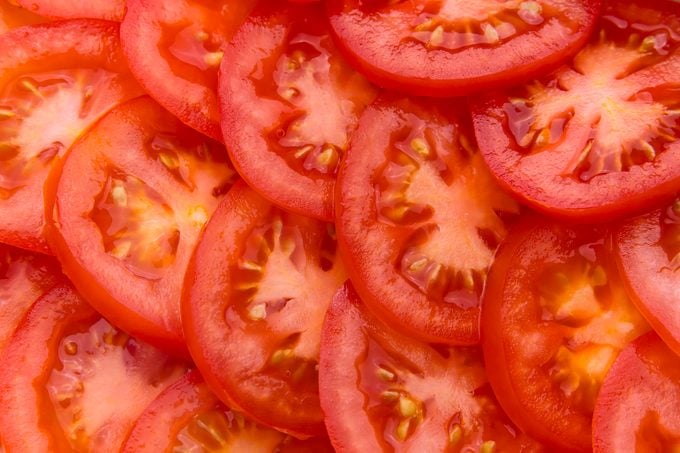New Study: Eating More of This Fruit Could Lower High Blood Pressure Risk by Nearly 40%
Updated: Mar. 21, 2024

New longitudinal research from Europe says a food that's a star of the Mediterranean diet could have yet another zesty claim to fame.
That moment when the cuff goes on and starts to squeeze until you feel the pulse point in your arm throbbing, then finally deflates to reveal what feels like your blood pressure “score.”
If you have a family history of high blood pressure or have noticed your values creeping up, you’ve probably already tried diet modification strategies and exercise to avoid medication. Numerous studies have shown that limiting sodium and using just one teaspoon less salt per day can help lower blood pressure readings—and now new research says that eating a little more of one superfood can make a difference, too.
The Mediterranean diet—long touted as one of the healthiest diets in the world—is a veritable blueprint for healthy eating. One common food that’s a cornerstone of the diet which is also often eaten in other regions of the world could potentially help you lower your blood pressure without medication, according to a new study.
The study, led by a team of biochemical researchers and published November 2023 in the European Journal of Preventive Cardiology, examined how the down-to-earth tomato performed in relation to blood pressure readings over several years. (First, if you’re wondering whether a tomato is a fruit, technically it is. Botanically, tomatoes have the seeds and ovaries that are necessary to categorize it as a fruit! Of course in the community of professional nutritionists and among laypeople, it’s usually considered a vegetable.)
Get The Healthy @Reader’s Digest newsletter

The study gathered health metrics and lifestyle information from a previous larger diet study in Spain, isolating over 7,000 men and women ranging from 55 to 80 years old. All participants were considered high risk for the development of high blood pressure based on age and other present conditions like type 2 diabetes, family history, or past blood pressure readings. In fact, over 80% were already considered hypertensive when the study commenced.
The study analyzed the amount of tomato products the participants reported eating and measured that against changes in their SBP (systolic) and DBP (diastolic) blood pressure readings. These values were captured when the study began, one year later, and three years later. Participants were categorized by the level of tomato consumption they reported, with the lowest being under 44 grams and the highest being over 110 grams per day, which was equivalent to a large tomato.
This Is the Healthiest Vegetable, According to a Decade of Research
What the data showed over the study’s three-year course was that the highest tomato consumers experienced the greatest benefit to blood pressure. Those without high blood pressure were an average of 36% less likely to develop it with regular consumption of tomatoes, equivalent to about one large tomato per day.
The study also had promising findings for people with lower levels of high blood pressure: Even half a tomato a day seemed to improve their numbers. Those already diagnosed with grade 1 hypertension—140-159 SBP/90-99 DBP mm Hg in Europe, slightly higher than stage 1 in America (SBP ≥130‐139 mm Hg or DBP ≥80‐89 mm Hg)—and moderate tomato consumers were more likely to see their blood pressure decrease than those who ate fewer tomatoes.
However, those with what was classified as grade 2 and 3 hypertension did not see the same positive effect with increased tomato consumption.
The authors theorized that the age of the population, long-standing blood pressure issues, arterial wall hardening, and other changes related to aging could prevent an overall improvement in blood pressure readings with tomato consumption alone.
They did note, however, that tomato consumers seemed to make healthier choices in general, including consuming a number of calories that promotes weight management, drinking less coffee and alcohol, and eating more fruits and vegetables overall, which might improve health in other ways beyond blood pressure for those weight higher levels.
The study’s authors concluded that, at least for those without high blood pressure or with lower levels, adding tomatoes to the diet could be a way to prevent future increases and could play a role in prevention. They said, “In uncomplicated grade 1 hypertension, diet modification is key in the initial management before medication prescription; hence, tomato consumption may be a vital component in healthy eating plans.”
They also emphasized that every little bit helps for long-term health, with a 10 mmHg reduction in SBP potentially being able to “reduce cardiovascular disease risk by 20%, coronary heart disease by 17%, stroke by 27%, heart failure by 28%, and all-cause mortality by 13%.” Those are numbers worth pursuing if all it takes is a few bites of tomatoes per day.



















